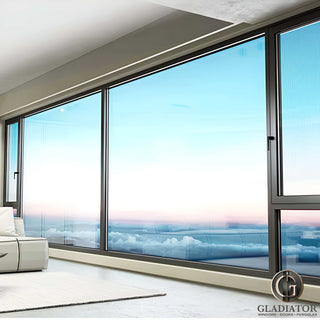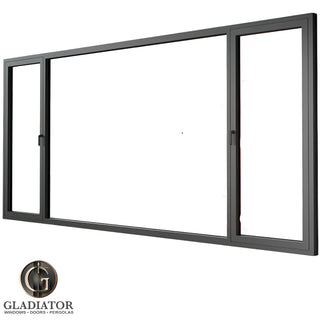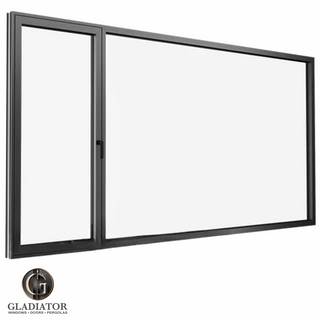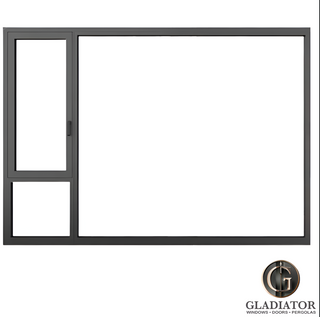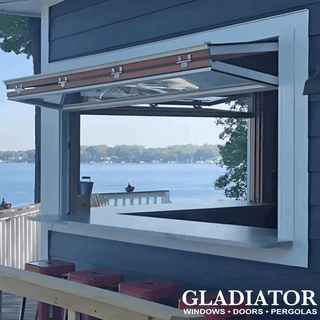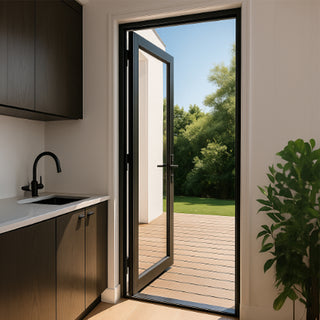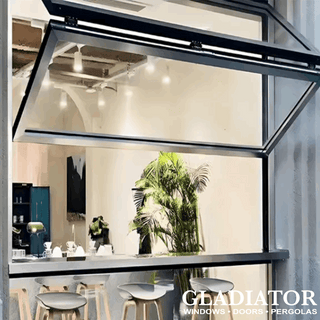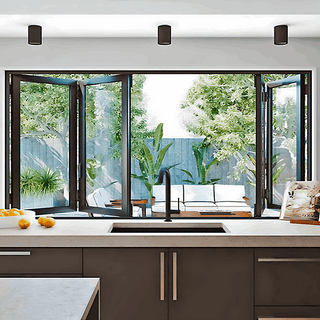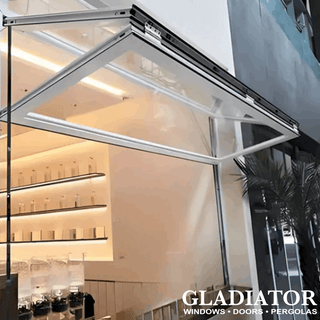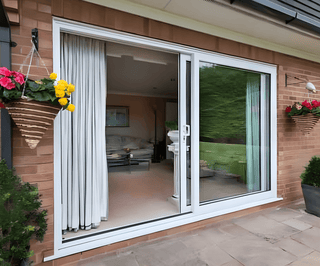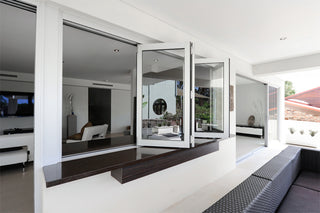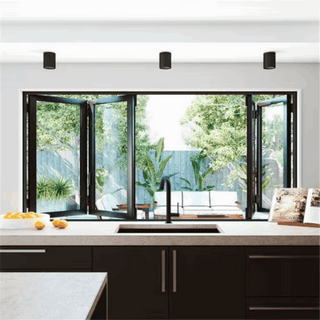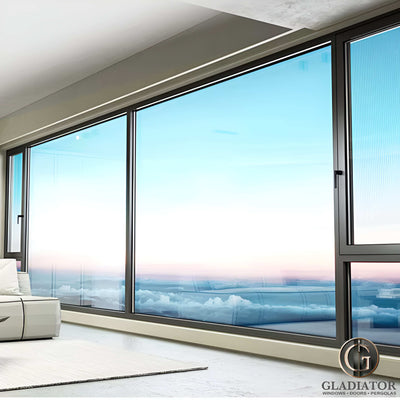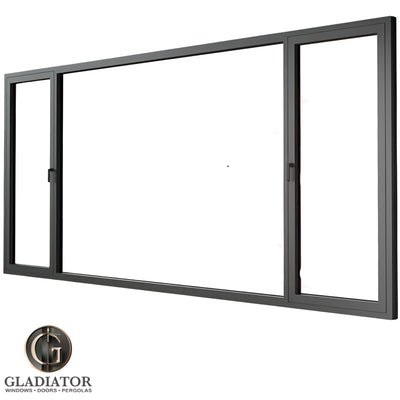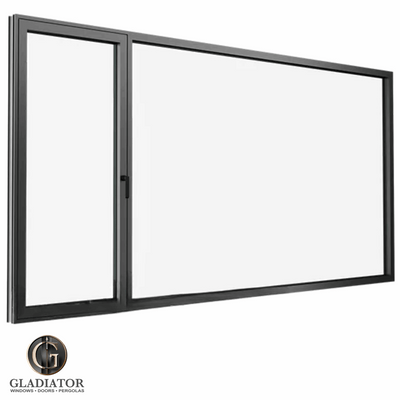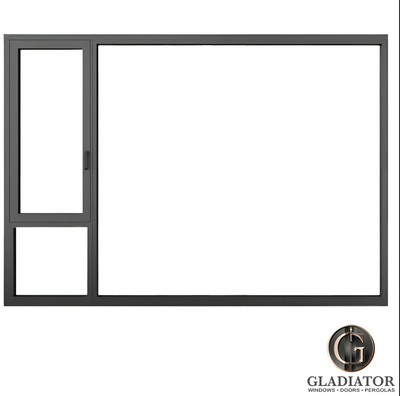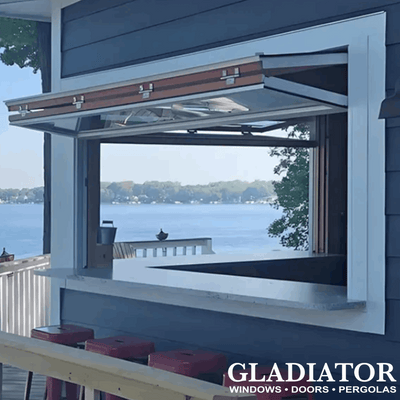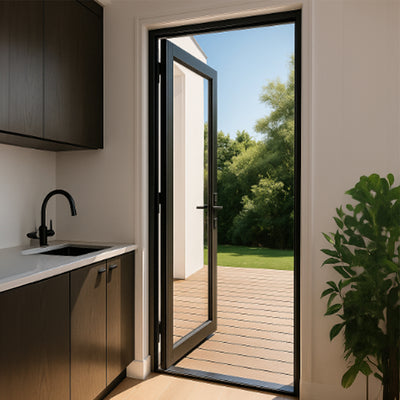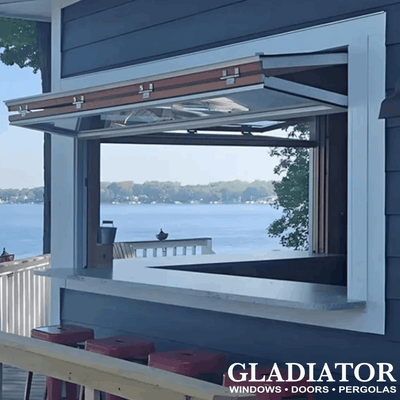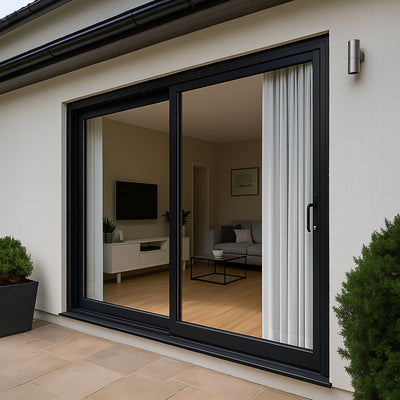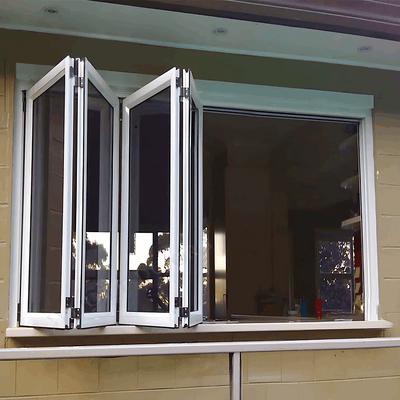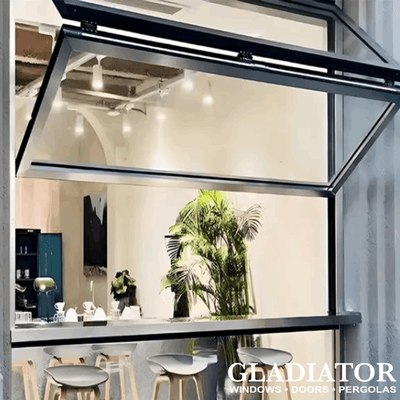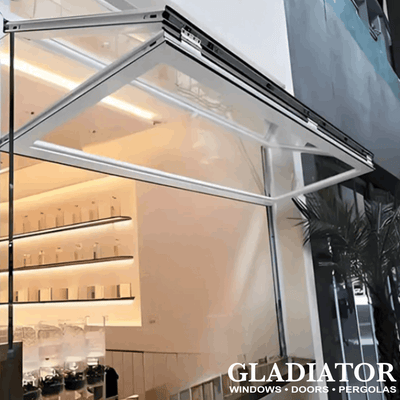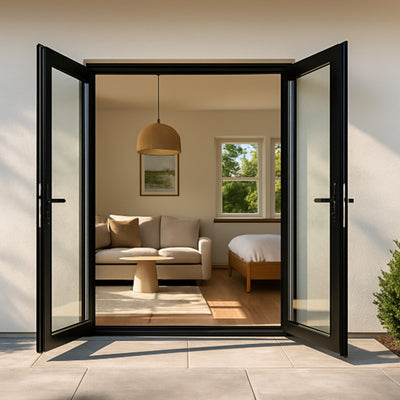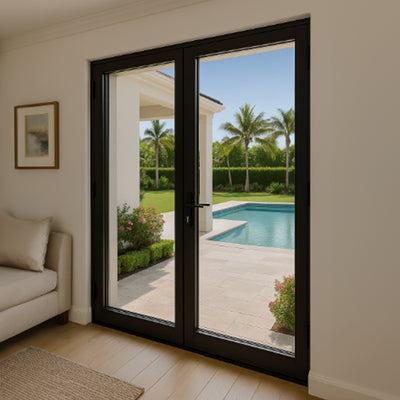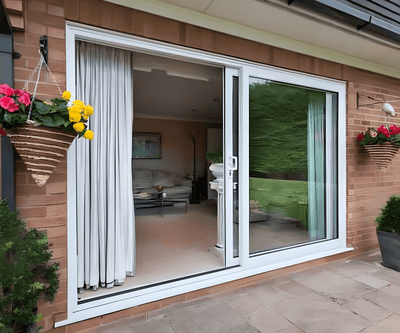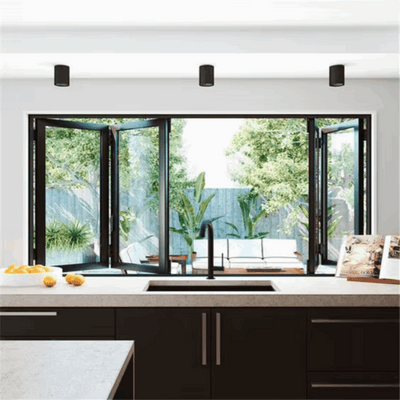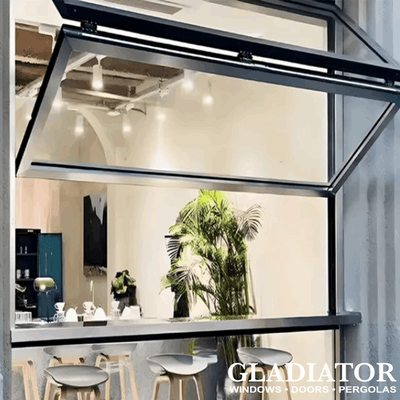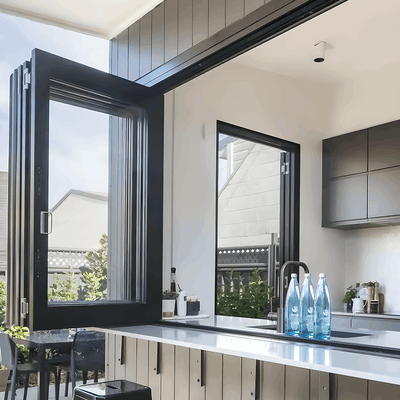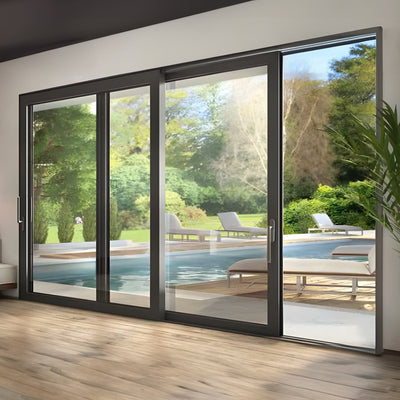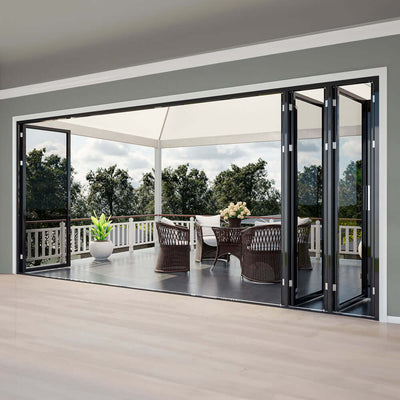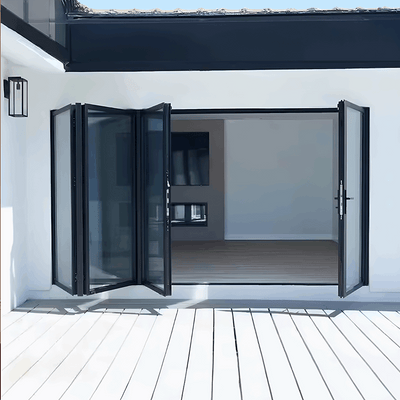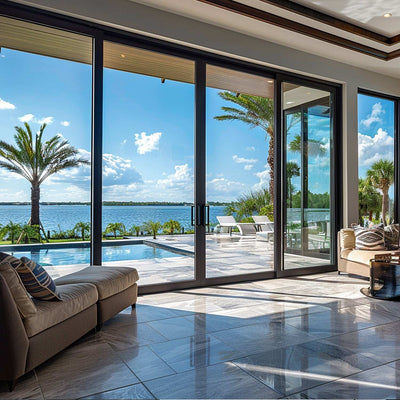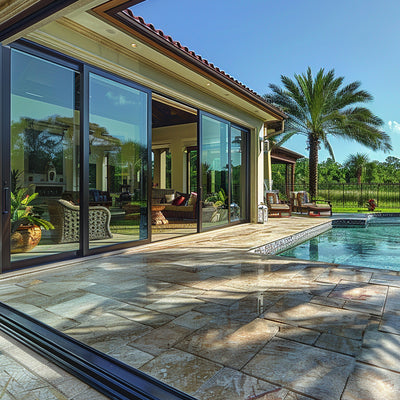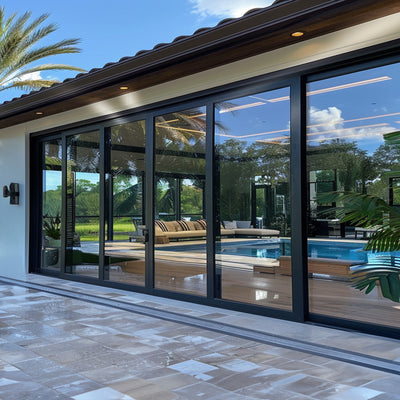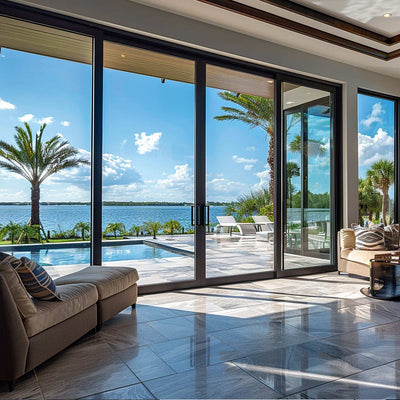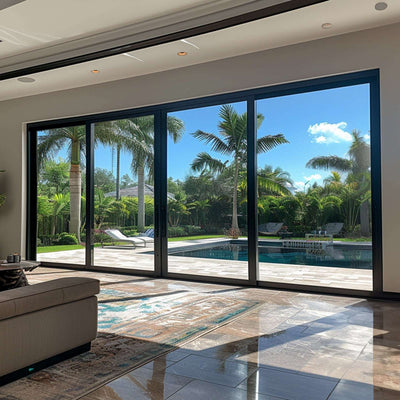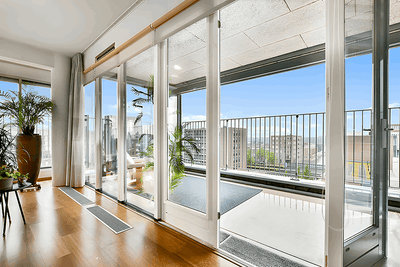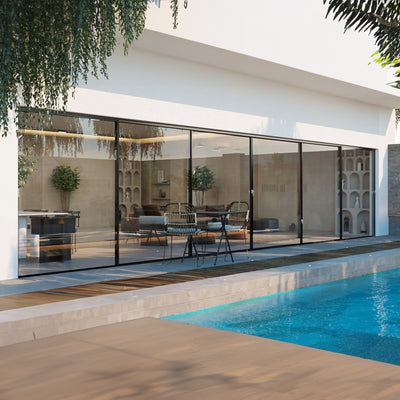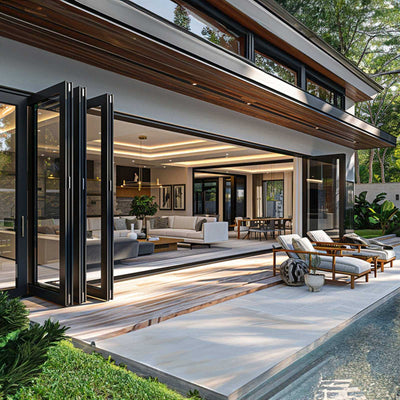Decoding New Construction Window Costs
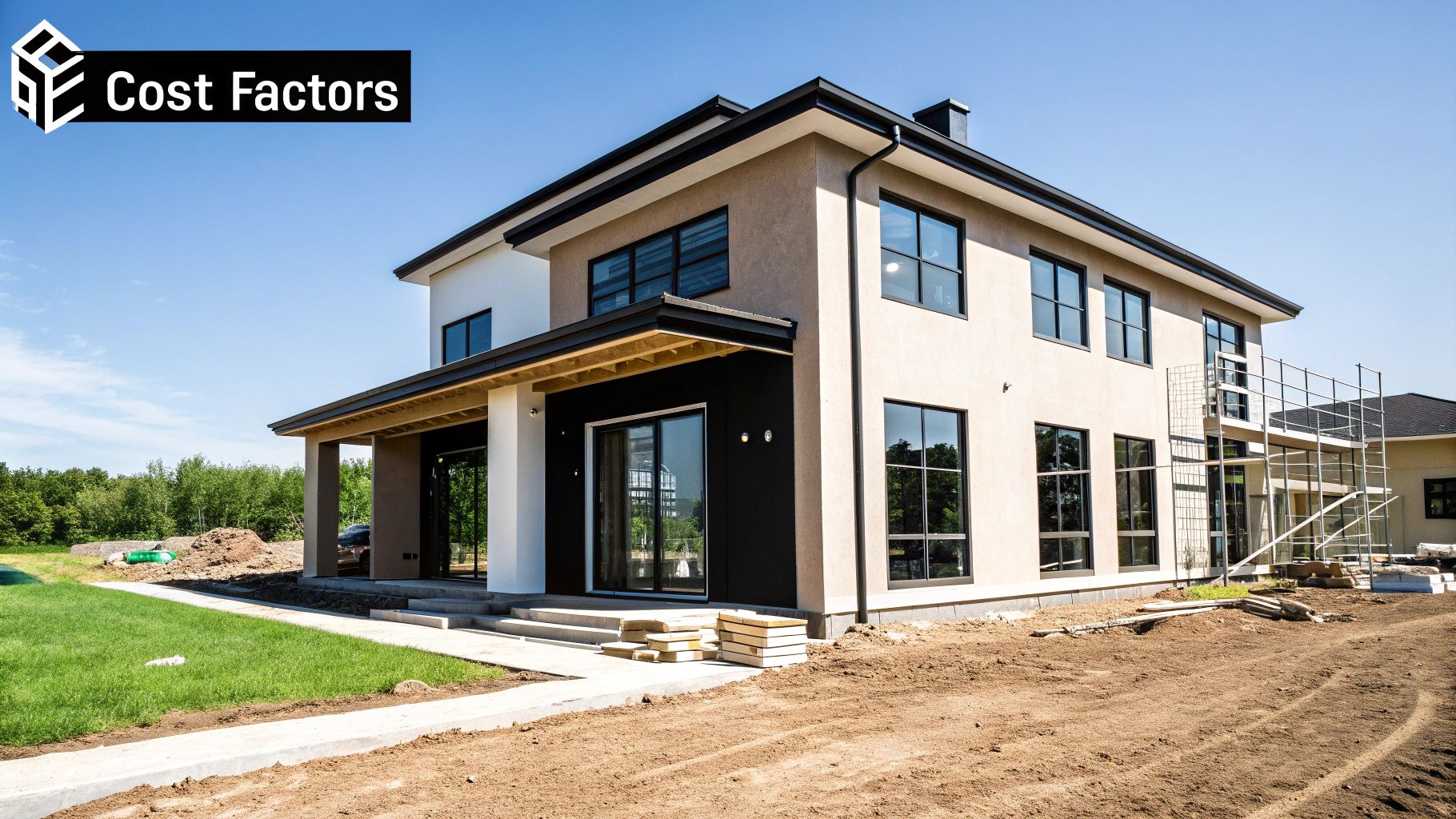
New construction windows differ from replacement windows primarily because they're installed during the initial building phase. This significantly impacts the overall cost due to specific features and installation requirements. A key feature of new construction windows is the nailing fin. This flange runs along the window frame's perimeter and attaches directly to the house framing. This integrated design necessitates careful coordination with other construction tasks, which adds complexity and cost to the project.
Understanding the Cost Breakdown
Several factors influence the final cost of new construction windows.
- Frame Material
- Window Size and Style
- Energy-Efficiency Features
- Installation Complexity
Understanding how these factors interact can lead to more informed decisions and potential cost savings. For instance, opting for a standard window size over a custom one can significantly lower expenses.
One crucial factor affecting cost is the frame material. Vinyl remains a popular choice thanks to its affordability and durability. Other materials like fiberglass and composite provide longer lifespans and better performance but come at a premium. Material costs saw a dramatic rise in 2022. Metal windows experienced a 30.2% increase, while wood windows saw a 16% jump.
The demand for energy-efficient windows has also grown significantly in recent years, fueled by desires for sustainability and cost savings over time. Typical installation costs, which include materials and labor, can range from $300 to $2,500 per window. More detailed statistics can be found at Angi. Finally, the complexity of the installation itself is a major cost driver.
Material Matters
Frame material significantly impacts both cost and performance. Vinyl frames are generally the most budget-friendly. Wood, fiberglass, and composite frames command higher prices, reflecting their superior durability, energy efficiency, and aesthetic appeal. Finding the right balance between budget and long-term value is essential.
Sizing and Style Considerations
Window size and style also play a significant role in determining overall cost. Larger windows and complex styles, such as bay or bow windows, require more materials and specialized installation, resulting in higher costs. However, thoughtful window style selection can optimize natural light and ventilation while adhering to budgetary constraints.
Installation: A Critical Cost Factor
The installation process represents a substantial portion of the total cost for new construction windows. Several factors impact the final installation price:
- Accessibility
- Number of Windows
- Necessary Structural Modifications
Choosing a qualified and reputable installer is essential. A skilled installer ensures not only a high-quality installation but also provides accurate cost estimations and effective project management, keeping the project on time and within budget.
The following table summarizes key differences between new construction and replacement windows:
To help illustrate the key differences, let's look at a comparison table:
New Construction vs. Replacement Windows
| Feature | New Construction Windows | Replacement Windows |
|---|---|---|
| Installation | Installed during initial construction | Installed after construction is complete |
| Nailing Fin | Present | Absent |
| Cost | Generally higher due to installation complexity | Generally lower due to simpler installation |
| Integration | Integrated with house framing | Fits within existing window frame |
| Project Scope | Requires coordination with other construction activities | Typically a standalone project |
This table highlights key differences in installation, cost factors, and overall project scope, emphasizing the integrated nature of new construction windows versus the more straightforward process of replacing existing windows. Understanding these distinctions is crucial for making informed decisions about window selection and budgeting for your project.
Window Frame Materials: Price vs. Performance
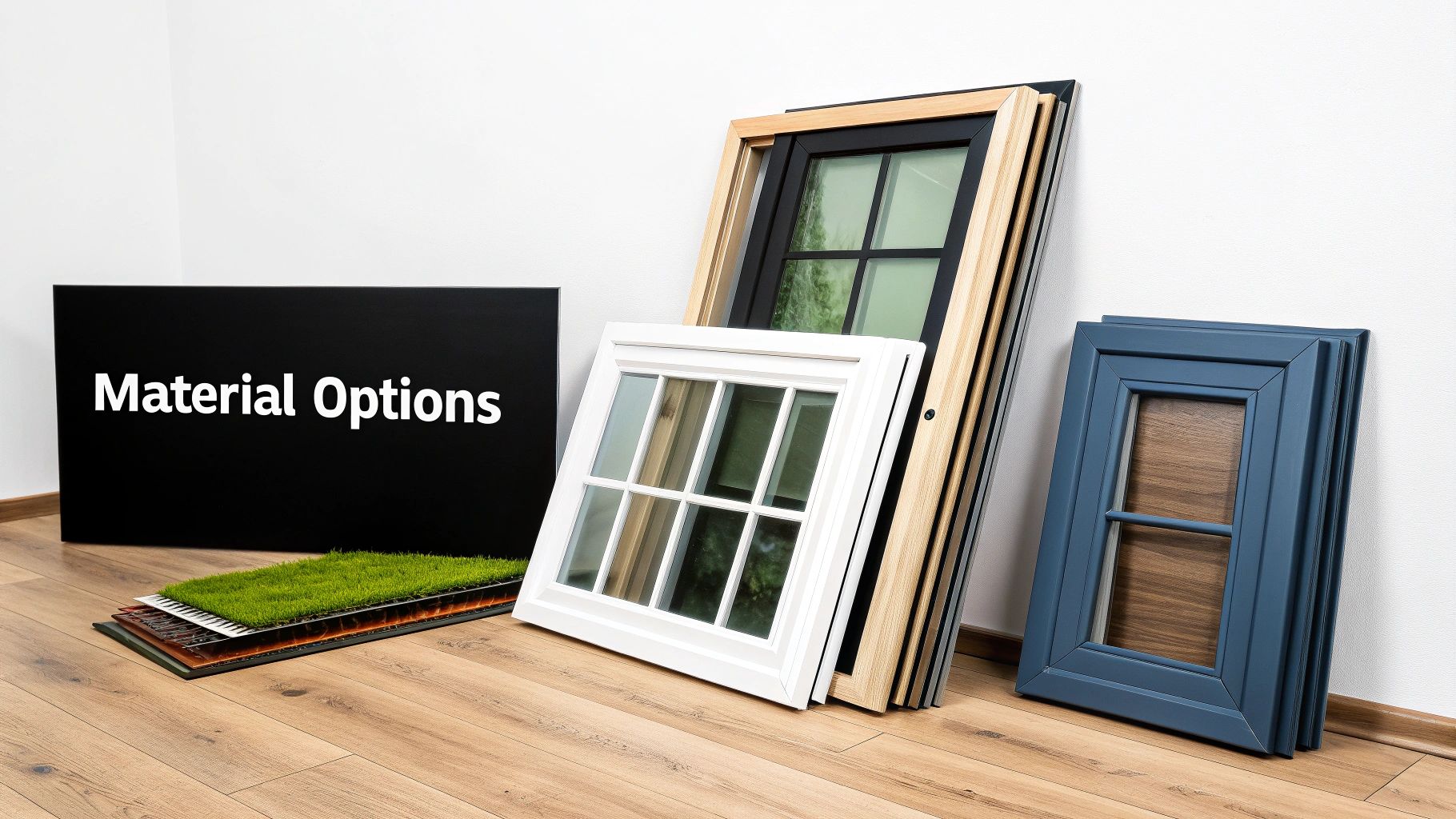
Choosing the right window frame material is a big decision. It affects not just the initial new construction window cost, but also the long-term value. This means considering the upfront price, maintenance costs, energy efficiency, and the material's expected lifespan. Let's explore the most popular choices: vinyl, wood, aluminum, fiberglass, and composite.
Vinyl: The Budget-Friendly Option
Vinyl windows are generally the most affordable option for new construction. This is thanks to their efficient production and readily available materials. They offer good energy efficiency and need minimal maintenance. This makes them a popular choice for homeowners looking for value. However, they may not be ideal for extreme climates due to expansion and contraction issues.
Wood: Timeless Beauty, Higher Investment
Wood frames offer a classic, elegant look. However, they come with a higher price tag than vinyl. They provide excellent insulation, leading to better energy efficiency. The trade-off is the higher maintenance. Wood requires regular painting or staining to protect it from weather. This adds to the long-term cost. For homeowners prioritizing aesthetics and willing to invest in upkeep, wood remains a solid choice.
Aluminum: Strong and Modern
Aluminum frames are known for their strength and contemporary appearance. They resist rot and insects, offering excellent durability. But aluminum is highly conductive. This can lead to higher energy bills. Thermal breaks can mitigate this, but they also increase the cost.
Fiberglass: Durable and Efficient
Fiberglass windows offer a strong combination of durability and energy efficiency. They resist rot, insects, and temperature extremes, making them suitable for various climates. While fiberglass typically costs more upfront than vinyl or aluminum, their long lifespan and low maintenance can lead to long-term savings.
Composite: Blending the Best Features
Composite frames combine the benefits of multiple materials. Often, they blend wood with vinyl or fiberglass to boost durability and reduce maintenance. They offer excellent energy efficiency and design flexibility. However, they are usually the most expensive option. You might also be interested in exploring different window and door options.
Comparing Costs and Benefits
When starting a home improvement project, accurately estimating costs is crucial. Using tools like a kitchen cabinet cost calculator can be helpful. Similar to cabinetry, choosing windows requires careful consideration of the long-term costs. The following table, "Window Frame Material Cost Comparison," provides a comprehensive breakdown of the key characteristics of various frame materials:
Window Frame Material Cost Comparison
| Material | Price Range | Lifespan | Energy Efficiency | Maintenance Level |
|---|---|---|---|---|
| Vinyl | Low | Moderate | Good | Low |
| Wood | Medium-High | Moderate-High | Excellent | High |
| Aluminum | Medium | High | Moderate | Low |
| Fiberglass | High | High | Excellent | Low |
| Composite | Very High | High | Excellent | Low |
This table highlights the trade-offs between initial cost, lifespan, energy performance, and maintenance. The best choice depends on your budget, the local climate, and your aesthetic preferences.
Window Styles That Won't Break Your Budget

Choosing the right windows for a new construction project significantly impacts the budget. From simple single-hung windows to dramatic bay windows, each style has cost implications. Balancing design aspirations with budget realities is key.
Single and Double-Hung Windows: Affordable Options
Single-hung and double-hung windows are typically the most budget-friendly. Their design and installation are straightforward. Single-hung windows have a fixed upper sash and a movable lower sash. Double-hung windows allow both sashes to move.
This added ventilation flexibility comes at a slightly higher cost due to the increased complexity. However, both remain economical choices for new construction.
Sliding Windows: Horizontal Functionality
Sliding windows, operating horizontally, are another cost-effective option. They're well-suited for wider openings and offer good ventilation. Their simple design contributes to their affordability.
This makes them a practical choice where maximizing the view is less important than controlling costs.
Casement and Awning Windows: Crank-Operated Choices
Casement windows swing outward on hinges, providing excellent ventilation and unobstructed views. Awning windows are similar, hinged at the top, enabling ventilation even during light rain.
Both operate with a crank mechanism, slightly increasing the cost compared to sliding or single-hung windows. However, they often remain less expensive than more complex styles. Learn more about the different window types.
Bay and Bow Windows: Upscale Architectural Details
Bay and bow windows project outward, creating attractive architectural features and adding interior space. However, their complex installation significantly increases new construction window costs.
These styles involve multiple angled window units, requiring more materials and specialized labor. Bay windows usually have three or more windows, while bow windows curve outward using four or more. The window market has grown, influenced by spending on new construction. In 2022, the U.S. consumer window market grew by 25.9% to $7 billion, while the professional market increased by 27.1% to $8.26 billion. Further growth is anticipated. See more statistics here.
Architectural Windows: Custom Designs and Pricing
Architectural windows are custom-shaped to fit specific architectural elements. These can include geometric shapes, arches, or other unique designs. Because of their custom nature, they're typically the most expensive.
Specialized manufacturing techniques and intricate details increase material and labor costs, making them a premium choice for discerning homeowners.
Balancing Style and Budget
Choosing window styles wisely is crucial for budget management. While premium options like bay or architectural windows enhance visual appeal, they can be costly. For budget-conscious projects, single-hung, double-hung, and sliding windows offer value.
Consider prioritizing premium windows for high-impact areas like living rooms or master bedrooms, and opting for cost-effective choices elsewhere.
Energy Efficiency: Worth the Premium Price?

Energy-efficient windows, especially those with the ENERGY STAR label, often have a higher initial cost than standard windows. However, the long-term benefits can often make them a worthwhile investment. This section explores the cost-benefit analysis of energy-efficient window features.
Understanding Energy-Efficient Features
Several key features contribute to a window's energy efficiency. Low-E coatings are thin metallic layers applied to the glass, reflecting infrared light and reducing heat transfer. Multiple panes create insulating air spaces between the layers of glass. These air spaces can be further enhanced by filling them with gas fills like argon or krypton. Finally, warm-edge spacers minimize heat transfer through the window frame itself. You might be interested in: Learning more about window types and their features.
Evaluating Cost vs. Benefit
These features add to the upfront new construction window cost. But, they can significantly lower your energy bills over time. The actual return on investment depends on factors like your local climate, energy prices, and the specific window features you choose. For example, triple-pane windows with gas fills might be highly beneficial in colder climates. In milder regions, double-pane windows with Low-E coatings might be sufficient.
Calculating Payback Period
The payback period is the time it takes for energy savings to offset the increased cost of energy-efficient windows. This is affected by your current energy costs and how much you expect those costs to increase in the future. To estimate your potential payback period, compare the annual energy savings from the upgraded windows to their higher upfront cost.
Tax Incentives and Rebates
Various incentives can help lower the cost of energy-efficient windows. Look into potential federal and state tax credits, as well as rebates offered by utility companies. These programs can significantly reduce your initial investment, shortening the payback period. Researching available programs in your area is essential to maximize your savings.
Making Informed Decisions
When choosing energy-efficient windows, consider your individual needs and climate. High-performance windows are generally a good investment, but some upgrades might not be necessary for your specific situation. The key is to balance initial cost with long-term value. For instance, multiple panes and Low-E coatings are often cost-effective. However, expensive gas fills might offer diminishing returns in some climates. By carefully evaluating your needs and available incentives, you can make informed choices that prioritize both energy efficiency and affordability.
Installation Costs: The Hidden Budget Buster
Even the most budget-friendly new construction window cost can unexpectedly increase due to installation expenses. Factors like simple first-floor installations versus complex architectural designs can significantly impact your final price. Let's explore the hidden costs that can inflate your window budget.
Access and Placement Challenges
Getting a large window into a second-story room with limited access can be a challenge. This can significantly increase labor costs. Contractors may need specialized equipment like scaffolding or extra manpower to navigate tight spaces, staircases, or difficult terrain. Higher floor installations often require lifts, adding to the total expense.
Structural Modifications: An Unexpected Expense
Sometimes, new construction windows require modifications to the existing structure. This might involve reinforcing the framing around the window opening or adjusting wall thickness. These structural changes require additional materials and skilled labor, increasing installation costs. For example, larger windows might require reinforcing the surrounding structure, driving up project expenses.
Wall Thickness and its Impact
Wall thickness surprisingly impacts installation costs. Thicker walls need more extensive flashing and sealing for a weathertight fit. This means more materials and labor time. This is especially important in older homes with thicker walls or areas with strict building codes regarding insulation and weatherproofing.
Red Flags in Installation Quotes
When comparing installation quotes, beware of unusually low bids. These can signal issues like inexperienced contractors or low-quality materials. A detailed quote should list all costs, including labor, materials, and any structural modifications. Vague quotes can hide expenses that might appear later, impacting your budget.
Asking the Right Questions
Before signing a contract, ask potential contractors about their experience with similar projects, their approach to unexpected problems, and their payment terms. A transparent contractor is essential for managing costs and a smooth installation. Check out our guide on different window types.
Managing Installation Costs: Smart Strategies
Several strategies can help you control installation costs without sacrificing quality.
- Timing: Scheduling your window installation during the off-season might mean lower labor costs due to lower contractor demand.
- Negotiation: Don't hesitate to negotiate pricing with contractors, especially for multiple windows.
- Bundling: Combining window installation with other projects, like siding replacement, can often save money.
By understanding these factors and planning proactively, you can manage your budget and avoid surprises. This allows you to make informed decisions, choose the right contractor, and achieve your desired outcome without financial strain.
Creating Your Window Budget: A Practical Roadmap
Building a new home is an exciting journey, but managing the associated costs can feel overwhelming. New construction window costs, in particular, require careful planning. This section provides a practical roadmap for creating a window budget that balances your vision with your financial reality.
Assessing Your Needs and Priorities
Before diving into the numbers, it's essential to identify your key needs and priorities. This will help you make informed decisions throughout the process.
- How many windows do you need? Begin with the essentials and then consider which rooms might benefit from extra natural light.
- What are your must-have features? Think about crucial elements like energy efficiency or specific architectural styles.
- What are your aesthetic goals? Consider how your windows will contribute to your home's overall look and feel.
Answering these questions will guide your material and style choices, leading to a more realistic budget.
Estimating Costs: A Step-by-Step Guide
Here's a practical approach to estimating new construction window costs:
- Measure your window openings: Accurate measurements are vital for obtaining precise cost estimates from suppliers.
- Choose your frame material: Research the cost of various frame materials, from cost-effective vinyl to high-end fiberglass.
- Select your window styles: Consider the cost implications of different window styles, like single-hung, casement, or bay windows.
- Factor in energy-efficiency features: Evaluate which energy-efficient features are worth the investment based on your local climate.
- Get installation quotes: Request itemized quotes from several reputable installers, ensuring they include labor, materials, and any potential structural modifications.
This step-by-step approach ensures a comprehensive budget that covers all anticipated expenses. Read also: Explore additional resources for planning your project.
Prioritizing and Phasing
If your ideal windows exceed your initial budget, consider prioritizing and phasing your purchases.
- Prioritize key areas: Focus your budget on windows in high-visibility areas like the living room or master bedroom.
- Phase your project: Install essential windows now and upgrade others as your budget permits.
This flexible approach lets you spread the cost over time without compromising your overall vision.
Smart Compromises That Save Money
Reducing costs strategically doesn't mean sacrificing quality. Here are some smart ways to save:
- Standard sizes: Choose standard window sizes to avoid the added expense of custom orders.
- Negotiate with suppliers: Don't hesitate to negotiate pricing, especially for bulk purchases.
- Bundle projects: Combining window installation with other projects, like siding replacement, can often result in discounts.
These smart compromises can help you stay within budget without compromising on functionality or aesthetics.
Avoiding Costly Mistakes
While saving money is essential, some areas should never be compromised.
- Quality installation: Invest in a qualified and experienced installer to prevent costly future repairs.
- Durable materials: Select materials suitable for your climate to avoid premature wear and tear.
- Essential energy-efficiency features: Don't overlook energy-efficient features that offer long-term cost savings.
Investing wisely now in quality materials and workmanship can prevent more significant expenses down the road.
Ready to transform your new construction project with stunning windows and doors? Explore Gladiator Window and Doors' extensive selection of extra-large sliding doors, pivot doors, bi-fold doors, panoramic doors, folding windows, and pergolas. We offer the lowest prices in the USA, backed by our Best Offer Guarantee. Get a quote today! Visit Gladiator Window and Doors

















